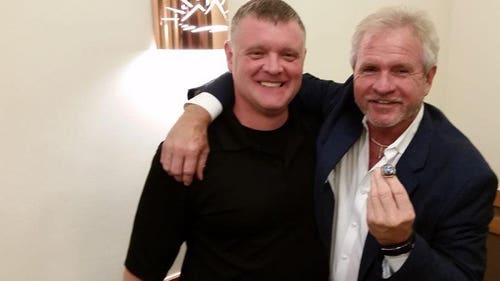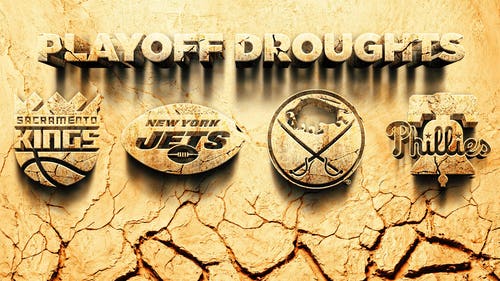
Why playing in the WBC actually might be safer than spring training
Many managers, GMs and other club officials continue to despise the World Baseball Classic, believing that WBC stands for nothing less than Worst Bud (Selig) Creation.
The positions of those officials are understandable, given the seemingly greater injury risk for players under the intensity of international competition, as opposed to the relative indifference of spring-training games.
Yet, according to figures compiled by Major League Baseball, players who participated in the past two tournaments actually were hurt at a lower rate than players who did not.
Among pitchers on 40-man rosters, only one of 40 from the 2013 tournament (2.5 percent) opened the season on the disabled list, as opposed to 61 of the 605 who remained with their clubs (10.1 percent).

Drew Smyly
Drew Smyly (Orlando Ramirez-USA TODAY Sports
The most recent WBC produced a comparable result: Only three of 55 pitchers from the tournament (5.5 percent) opened on the DL, as opposed to 75 of the 601 who remained with their clubs (12.5 percent).
Some of the pitching injuries for non-WBC participants carried over from the offseason or previous season, skewing the numbers somewhat. On the other hand, there is no way to know if certain injuries from the WBC also would have occurred under normal spring-training conditions.
Of the three pitching casualties this year, it’s reasonable to assume that Mariners lefty Drew Smyly and Mets righty Seth Lugo either suffered new injuries or aggravated pre-existing conditions during the WBC. Blue Jays closer Roberto Osuna, however, remained adamant in an interview with ESPN.com on Thursday that his cervical spasms were not related to his participation.
For position players, the DL rate of those who participated in ’13 (4.8 percent) also was lower than the rate of those who did not (7.5). The rates for the groups in ’17 were identical (7.2 percent).
Of course, the few injuries that occur while players are away from their major-league teams stand out, particularly when the problems perhaps could have been avoided.

Didi Gregorius
Adam Hunger-USA TODAY Sports
Case in point: Didi Gregorius’ right-shoulder injury, which seemingly resulted from him turning a double play at second base, the position he was playing for the Netherlands in an exhibition instead of his usual shortstop, due to the presence of Andrelton Simmons.
Still, here is a partial list of pitchers who did not compete in the WBC but landed on the DL: Anthony DeSclafani, Sonny Gray and Collin McHugh; Steven Matz, David Price and Alex Reyes; Carlos Rodon, Trevor Rosenthal and Chris Tillman.
The non-WBC position players who landed on the DL with spring-training injuries was smaller, but included Ian Desmond, Andre Ethier, Jason Kipnis and J.D. Martinez.
Facts are facts, right? Haven’t we learned that data overrides perception? Well, many club officials remain wary of the WBC regardless, continuing to believe that the risk of injury mitigates any modest financial benefit presently derived by the club.

Ian Demond
Ian Desmond (Mark J. Rebilas-USA TODAY Sports
Others consider such a view to be short-sighted; the WBC is a joint venture of MLB and the players’ union, and representatives on both sides see the tournament as an investment in the future of baseball internationally.
The event is not perfect, and never will be. But players coming off injuries are almost always ruled out. And WBC managers generally are careful, almost to the point of obsession, with making sure players return to their clubs healthy.
The concerns of managers, GMs and others are understandable; their jobs are at stake. The owners, meanwhile, pay players millions to compete for their teams, not their countries. Still, it’s time for everyone to stop crying wolf every time a WBC participant get hurt.
Players – lots of ‘em – get hurt in spring training, too.

Stephen Piscotty
Charles LeClaire-USA TODAY Sports
PISCOTTY’S LOGIC
Players who sign extensions prior to arbitration generally place more value on financial security than the upside of going year-to-year and reaching free agency sooner.
Cardinals right fielder Stephen Piscotty was no different, but his formula also included a realistic assessment of who he is as a player and what his future earnings might be.
Piscotty, who signed a six-year, $33.5 million extension with the Cardinals on Monday, entered the season with 29 homers and an .815 OPS in 905 career plate appearances – good, but not outrageous for a corner outfielder who recently turned 26.
So, as Piscotty pondered his long-term future while still two years away from arbitration, he evaluated a number of options in conjunction with his agent at CAA, Brodie Van Wagenen.
Those options included the purchase of disability insurance in the event of catastrophic injury and additional loss-of-value insurance if Piscotty failed to reach his full earning potential, sources said. They also included products such as Fantex, which offer players an upfront, lump-sum payment in exchange for a percentage of future earnings.
In the end, Piscotty chose his deal with the Cardinals, which will guarantee him $11 million over the first three seasons, or about $6 million more than he likely would have earned going year-to-year. He gave up one and possibly two free-agent years, depending upon whether the Cardinals exercise his $15 million option for 2023.
However, part of the calculation for Piscotty, Van Wagenen and CAA was that 31-year-old corner outfielders with modest power are not currently in high demand on the free-agent market. Only elite producers such as Yoenis Cespedes get monster contracts at that age.
This way, Piscotty is protected if he remains the same type of player or even declines during his peak years. If he manages to outperform his deal, escalators could raise the price of his option to $18 million - and the demand for him in free agency surely would be higher.

Greg Holland
Benny Sieu-USA TODAY Sports
A PAIR OF IMPRESSIVE BULLPENS ... SO FAR
It’s important to be careful with early-season assessments of bullpens (and everything else), but the Rockies had to be encouraged by the results of their top four relievers in the team’s opening series against the Brewers.
The quartet of Greg Holland, Mike Dunn, Adam Ottavino and Carlos Estevez combined to allow one run in 11 1/3 innings, with Holland converting all three save opportunities and Dunn striking out six in 3 1/3 innings.
Holland, signed to a one-year, $7 million free-agent contract, threw his fastball 94-95 mph according to the new PITCHf/x data, which according to Fangraphs is running about one mph higher than in the past.
His velocity before Tommy John surgery was a tick above that level, but evaluators report that Holland’s slider was again quite effective; he used it 54.3 percent of the time against the Brewers, and his fastball 42.9 percent.
In the view of one evaluator, Holland’s fastball-slider combination is good enough for him to close even if his velocity does not come all the way back. He is about 18 months removed from Tommy John, and the Rockies will handle him carefully, at least at the start of the season.
The caveat with the results of the Rockies’ top four thus far is that their opponents’ batting average on balls in play is an unsustainable .089. The same goes for the Twins’ bullpen, which threw 10 scoreless innings against the Royals but had an opponents’ BABIP of .147, stranding all six inherited runners.
The sweep of the Royals, though, was not without meaning for a Twins club that started last season 0-9, and the team was impressive defensively throughout the series.

Chris Carter
Kim Klement-USA TODAY Sports
YANKEES’ CARTER CAN’T ESCAPE
Yankees first baseman Chris Carter, who hit a sacrifice fly in his only plate appearance during the series at Tampa Bay, will be in the same unfortunate position next winter as he was this offseason.
Carter, 30, again will be eligible for arbitration, and again is likely to be non-tendered. The difference is, he figures to be coming off a season in which he played sparingly, as opposed to one in which he hit 41 home runs.
Adding to Carter’s challenge is the likelihood that the market again will include a number of first base/DH types who signed one-year deals – players such as the Rangers’ Mike Napoli, Red Sox’s Mitch Moreland and Rockies’ Mark Reynolds.
The Royals’ Eric Hosmer, Indians’ Carlos Santana and Mets’ Lucas Duda also will be free agents, provided that none signs an extension.

Troy Tulowitzki
Kim Klement-USA TODAY Sports
TULO CAME CHEAPO
Thought the Josh Donaldson trade was a heist for former Blue Jays GM Alex Anthopoulos? The Troy Tulowitzki deal also is looking pretty good, though Tulo isn’t as much of an impact player as Donaldson at this stage of his career.
The Rockies recently designated for assignment right-hander Miguel Castro, one of three pitchers they received in the deal. Another, righty Jesus Tinoco, had a combined 6.86 ERA at two levels of A ball last season. The prize of the group, righty Jeff Hoffman, has yet to crack the major-league rotation, though he remains a top prospect.
Keep in mind as well that the Rockies took the entire remainder of Jose Reyes’ contract in the deal, leaving the Jays with a relatively modest five-year, $50 million commitment to Tulo. The absorbed took a hit of nearly $40 million on Reyes’ deal last June when they released him after he completed his 51-game suspension for violating baseball’s domestic-violence policy.
AROUND THE HORN
*On the subject of deals that backfired, Tigers general manager Al Avila made two ill-fated moves in a span of two days in Dec. 2015, signing right-handers Mike Pelfrey and Mark Lowe to two-year contracts.
The Tigers, who released both players this spring, owe Pelfrey all but the pro-rated portion of $8 million and Lowe all but the pro-rated portion of $5.5 million. Pelfrey signed a minor-league deal with the White Sox, Lowe with the Mariners.
*It’s not difficult to understand why second baseman Rougned Odor accepted a six-year, $49.5 million guarantee from the Rangers, but his deal could turn out to be most under-valued of the recent extensions.

Rougned Odor
Kevin Jairaj-USA TODAY Sports
Odor, 23, still has upside, and he would have been a free agent entering his age 27 season. Teams covet middle infielders with 30-homer power, especially when they’re entering their peak years.
*Outfielder Angel Pagan remains a free agent not because he has been unable to secure a major-league offer; he already has turned down two separate guaranteed deals, but is holding out for a certain desired salary, according to a major-league source.
Among the other remaining free agents: Michael Bourn, Alejandro De Aza and Doug Fister; Jeff Francoeur, Kelly Johnson and Brett Lawrie; Colby Lewis, Jake Peavy, Alexei Ramirez and Melvin Upton Jr.
*Rays right-hander Alex Cobb got swings-and-misses on seven of his 19 changeups against the Yankees on Wednesday, according to Inside Edge. Yet, some evaluators in attendance were not convinced that the pitch was as sharp as it had been prior to Cobb undergoing Tommy John surgery.
It stands to reason that Cobb only will improve as he regains his muscle memory. Then again, he had made a combined 18 starts between his 2016 rehabilitation assignment and major-league return and 2017 spring training. Teams are watching him closely; Cobb is a free agent at the end of the season.







